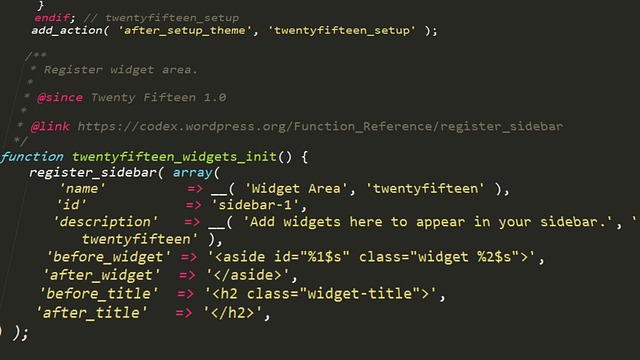As technology continues to evolve, the development of mobile applications is becoming increasingly important for businesses. So, the question arises: how effective is React Native?
The market for mobile applications is continually growing, creating an expansive marketplace for React Native to tap into. According to research by Flurry Analytics, mobile app usage increased by 115% in 2019, and users are spending more time on apps than ever before. Additionally, a survey done by Statista revealed that the global revenue generated by mobile apps is also on the rise, with an expected total of $70.3 billion by 2020. These figures demonstrate the need for businesses to create highly effective mobile applications for their users.
The concept of React Native has been around since 2015 and it promises to offer a cross-platform solution for mobile application development. This allows developers to save time and effort when building apps by using popular JavaScript libraries and React Native components. However, some developers are sceptical of the effectiveness of React Native compared to fully native solutions such as Android Studio or XCode for iOS.
In this article, you will learn about the potential of React Native, the impact of JavaScript libraries, and what developers can do to make this technology as effective as possible. Furthermore, we will look into the importance of using the right components, setting expectations, and debugging the code. Ultimately, the goal is to explore the potential of React Native and how it can help your business create more successful applications.

Definitions of React Native
React Native is an open source mobile application development framework created by Facebook. It is used for developing cross-platform mobile apps for iOS, Android, and Windows. It combines the best aspects of native development with React, a popular JavaScript library for creating user interfaces.
React Native is based on the React JavaScript library, and is focused on providing users with a better mobile experience by utilizing native UI components and optimizing performance. It uses reusable and efficient components to develop native applications and focuses on the user interface, making it easy to create interactive user interfaces.
Native UI Components are user interface elements written in the native language for a specific platform. React Native allows developers to use these components to create native user interfaces in their applications. This allows developers to create apps that look and feel like native apps on different platforms.
Optimized Performance is a key focus of React Native. It uses advanced techniques to improve the performance of your app, including reducing memory usage and making your code more efficient. This allows you to develop apps that run more quickly and smoothly, with fewer bugs.
Reusable Components are pre-built pieces of code that you can reuse in your applications. React Native makes it easy to reuse components and keeps your codebase organized and efficient.
React Native is an efficient, powerful, and easy-to-use framework for developing mobile applications. By utilizing native UI components and optimizing performance, React Native makes it possible for developers to create native apps that look and feel like native apps on different platforms. It also allows for reusability of components, making it easier to create interactive user interfaces and keep your codebase organized and efficient.
Using React Native to Revolutionise Mobile Development
What is React Native?
React Native is an open-source mobile application development framework created by Facebook in 2015. It is a JavaScript-based technology that is used to write native applications for both iOS and Android platforms. It uses an innovative method to bridge the gap between native development and hybrid mobile app development frameworks and speeds up the development process, as developers need not learn different technologies to create an app for multiple platforms.
Benefits of Using React Native
Using React Native to build mobile applications brings several benefits. The most important ones are as follows:
- React Native is built on an open-source platform, making it easier to integrate other development tools.
- React Native can run on both iOS and Android platforms, reducing the need to create separate apps for each platform.
- It uses code reusability which means that the same code can be used to develop similar elements across the app.
- The interface of the applications created using React Native is simpler and easier to use compared to other mobile development platforms.
- The performance of applications created using React Native is much better than their hybrid counterparts.
- It provides access to Device Hardware and thus developers can use the native components of the device in their applications.
Applications of React Native
React Native is being employed by many organizations to build cross-platform mobile applications. Some of the reputed apps that have been developed using React Native are:
- Airbnb
- UberEats
- Uber
- HTC
- Walmart
React Native is also gaining traction in the gaming and virtual reality world. Some of the games and VR applications that have been built using React Native are Angry Birds, Bright Lives, and PrimeVR. These applications are proving to be an effective way of transforming businesses and making them more competitive in the market.
React Native is quickly becoming one of the most popular cross-platform mobile application development frameworks and is revolutionising mobile development with its efficient and reliable applications. Organizations are leveraging React Native and its vast range of features to provide better experiences for their users.
Redefining the Possibilities with React Native
A Game Changer in the Making
It’s almost impossible to imagine a disruptive technology that could redefine the traditional boundaries of development. React Native provides the tools to unlock new frontiers in web and mobile application development. But what sets React Native apart from traditional options? What does this library offer that could revolutionize the way applications are developed today?
React Native’s key innovation lies in the use of JavaScript components to enable development that is both powerful and versatile. By allowing developers to use a single language for the entire development process, React Native significantly reduces the learning curve for developers and makes more complex projects possible. Furthermore, React Native offers a declarative API that enables developers to create data-driven interfaces faster and more easily than ever before.
A Thought-Provoking Question
How can React Native revolutionize user experience for mobile applications? Quite simply, React Native offers the potential to build applications with unparalleled speed and in high fidelity. By leveraging the same technologies used in web development, developers are able to create high-fidelity applications in short timeframes. Furthermore, the declarative approach encourages the development of applications that are reactive and responsive, allowing for more efficient user interactions.
The highly responsive nature of React Native lends itself to the development of applications that offer a personalized experience to each user. Developers are able to collect more granular user data, such as user interaction and preferences, that can be used to create unique experiences tailored to individual users. With access to this level of data, the potential for providing tailored content and services for each user increases exponentially, opening up exciting new possibilities for developers.
Finally, React Native makes it easier for developers to write well-structured code, allowing for greater integration options. Due to its intuitive API, React Native can be used to quickly prototype and develop applications with complex information architectures. This means that developers are no longer constrained by their front-end development skills, allowing them to focus on creating applications with highly developed information architectures.
What’s more, React Native’s cross-platform support ensures that applications can be developed for both Android and iOS from a single codebase, eliminating the prohibitive cost of creating separate versions of the same application for different platforms. This makes React Native an invaluable tool for developers looking to quickly create cross-platform experiences with maximum efficiency.
In short, React Native offers developers an unparalleled opportunity to create applications that are more powerful and efficient than ever before. With React Native, the possibilities are endless.
Maximising Your Mobile App Potential with React Native
The Case for React Native for Mobile App Development
In a world where digital technology has become ubiquitous, mobile app development flourishes. But creating a user-friendly mobile application presents a unique set of challenges. Is there a way to make this process easier, faster and more cost-effective? Could leveraging the power of React Native provide a solution?
Thought-provoking question: Could the use of React Native revolutionize mobile app development?
The key idea here is that React Native can offer developers a cutting-edge platform for creating great mobile apps quickly and efficiently. A modern, versatile, open-source framework, React Native enables developers to create mobile applications that are both powerful and user-friendly. Its cross-platform capabilities allow developers to quickly and easily create mobile apps for both iOS and Android, with a single codebase. The framework’s user interface components can be reused in multiple places, saving time and effort. It also offers developers a robust debugging system, making it easier to identify and fix errors.
Examples of React Native’s Benefits
Using React Native for mobile app development certainly has its advantages. Developers can take advantage of shorter development periods, as code can be reused across multiple platforms. They can also spend more time creating the best user experience possible. Furthermore, React Native offers a hot reload feature, making it fast and easy to detect and fix any errors.
The advantages of React Native extend to the user as well. Mobile apps built with the platform feature smooth animations and easy navigation. Due to its cross-platform capabilities, developers can create just one app that can be used across both iOS and Android devices, with no additional code required. This helps to reduce development time and costs, saving both the user and the developer money.
React Native also integrates seamlessly with the web, making it easy to create feature-rich, interactive web applications. And, thanks to its platform-specific code, developers can tailor React Native apps to their users’ exact needs. This allows users to reap the benefits of an app that is tailor-made to their preferences.
In conclusion, React Native offers a great platform for developers to create powerful and user-friendly mobile apps quickly and cost-effectively, thereby increasing their potential. With its versatile, open-source codebase, robust debugging system, and cross-platform capabilities, React Native is poised to become the platform of choice for the next generation of mobile apps.
Conclusion
React Native has been widely praised as the solution for developers looking to build powerful cross-platform mobile applications. As native apps quickly become the de facto standard for mobile user experience, developers have been looking for a framework that allows them to quickly produce high-quality, responsive mobile apps without spending weeks building native apps from scratch. React Native is seen as a breakthrough in mobile development, offering a single codebase for both iOS and Android.
But how effective is React Native really when it comes to producing superior user experiences? Does it live up to the hype? Could it be more buyer beware than developers bargain for? These are all legitimate questions, and the answer may depend heavily on the type of application you are building and what performance you expect.
In the end, if you are planning to build a complex application requiring quick response time and high productivity, then React Native may not entirely fit the bill. That being said, it’s still a powerful tool in the mobile development toolkit, and for simpler applications, React Native is a great choice. To get a better sense of how React Native stacks up in the mobile development space, it might be wise to consider a test app build to get a sense of its capabilities. Plus, with new releases coming out all the time, it may be worth following a few React Native blogs to keep up with the latest features and updates.
F.A.Q.
Q1: What is React Native?
A1: React Native is an open-source mobile application framework created by Facebook. It is used for developing user interface and cross-platform applications for iOS, Android, and the web. It is based on React, Facebook’s JavaScript library for building user interfaces. It allows developers to build native apps and deploy them to multiple platforms with a single codebase. It is written in JavaScript, processed through the React renderer, and output to native code for use on mobile devices.
Q2: What are the benefits of using React Native?
A2: React Native offers a number of advantages for developers, such as faster development time, the ability to reuse code across multiple platforms, less memory overhead, and improved performance. It also provides developers with the same React programming model used on the web, meaning developers can build highly interactive mobile applications using existing web technologies.
Q3: How easy is it to learn React Native?
A3: React Native is relatively easy to learn if you are already familiar with React and JavaScript. It requires a basic understanding of the React programming model and JavaScript, as well as some knowledge of the mobile SDKs for the platforms you are targeting.
Q4: Does React Native support native components?
A4: Yes, React Native supports native components, giving developers the ability to access platform specific features like camera, accelerometer, and geolocation. Additionally, developers can use pre-built components from popular libraries like Redux and React Navigation.
Q5: Are there any limitations when using React Native?
A5: React Native is limited in the accuracy of data it can provide about platform specific components such as geolocation, and the performance of network operations such as fetching data from a server. Additionally, React Native may require developers to write additional code to access certain native device features.




